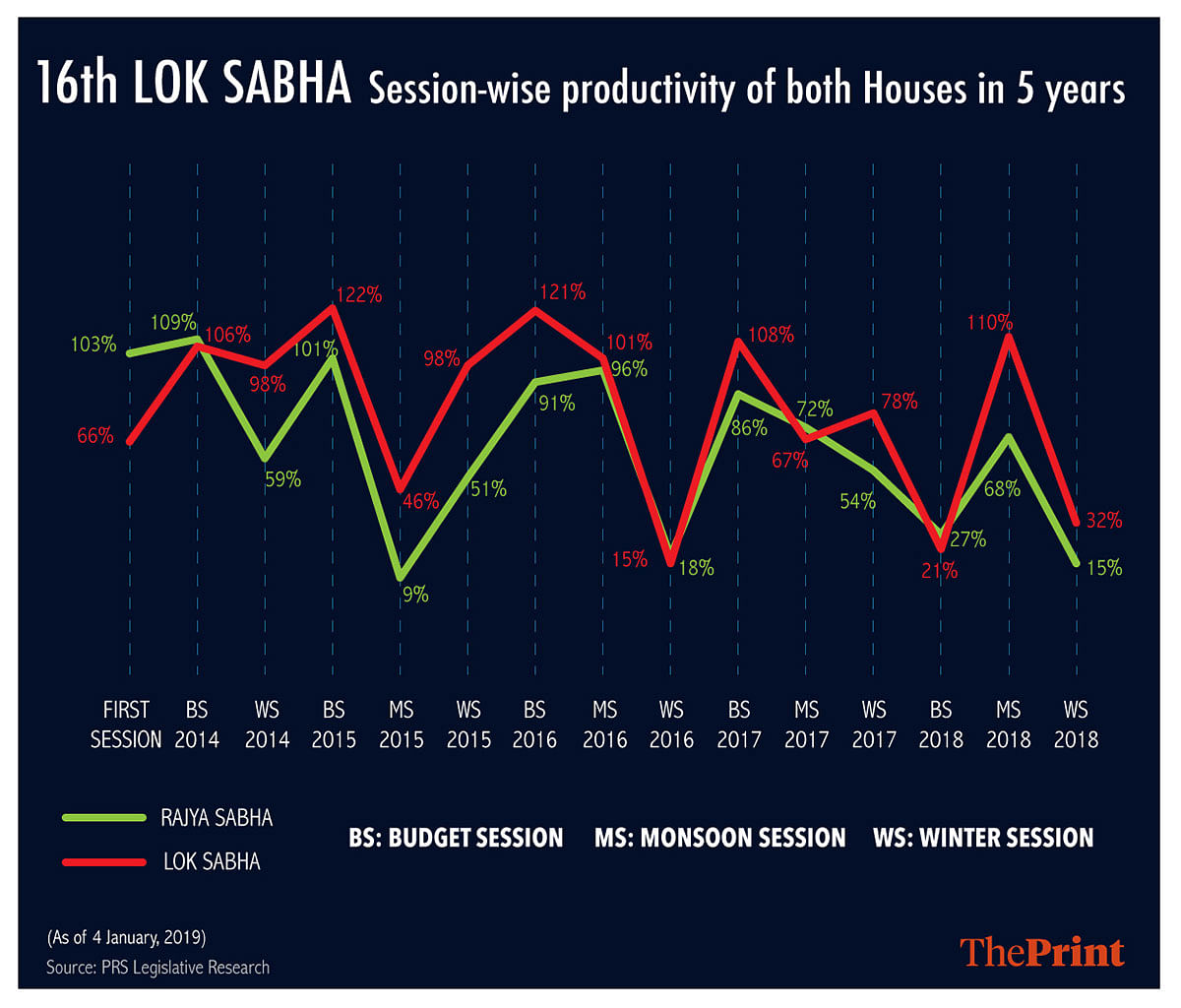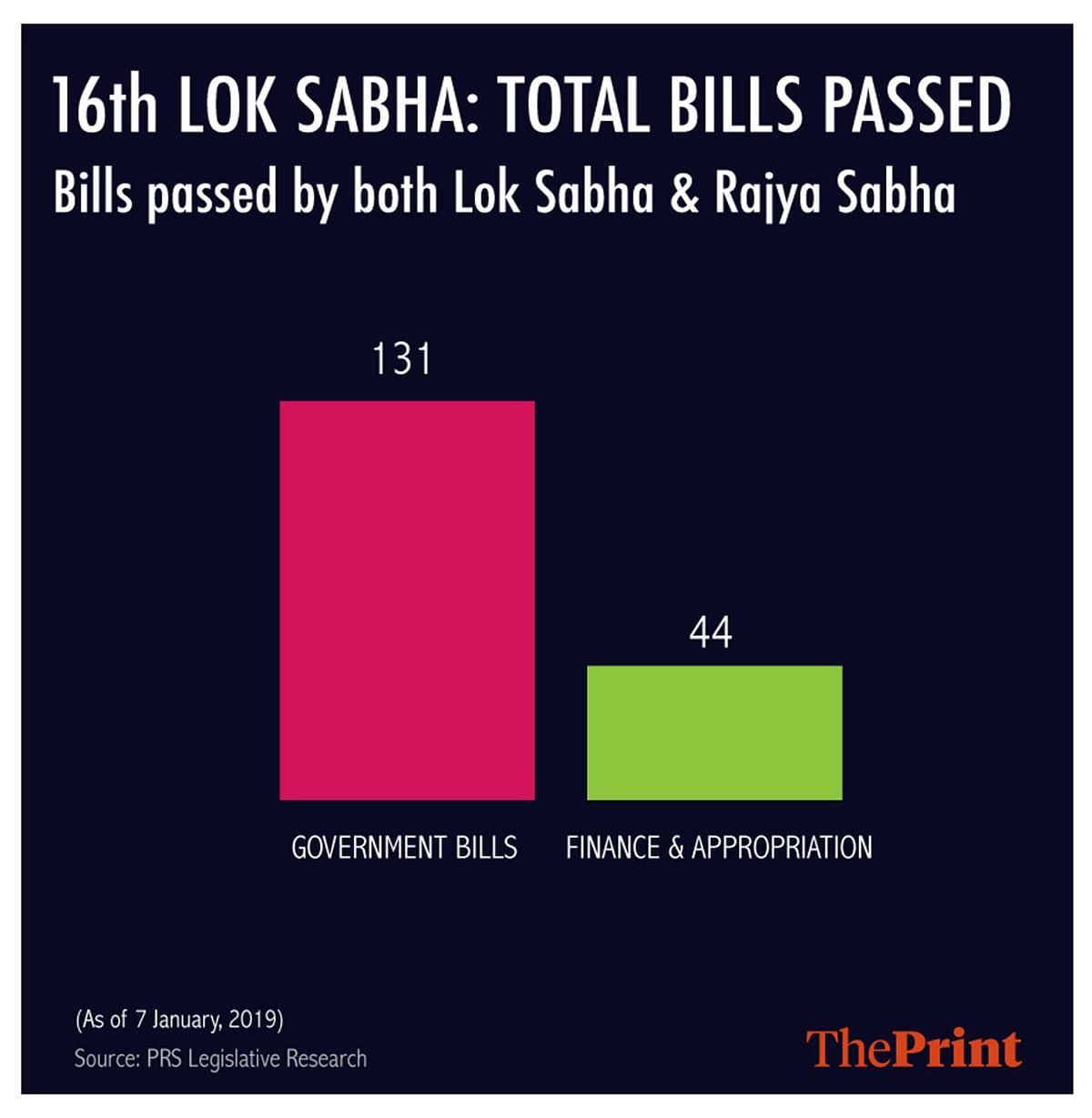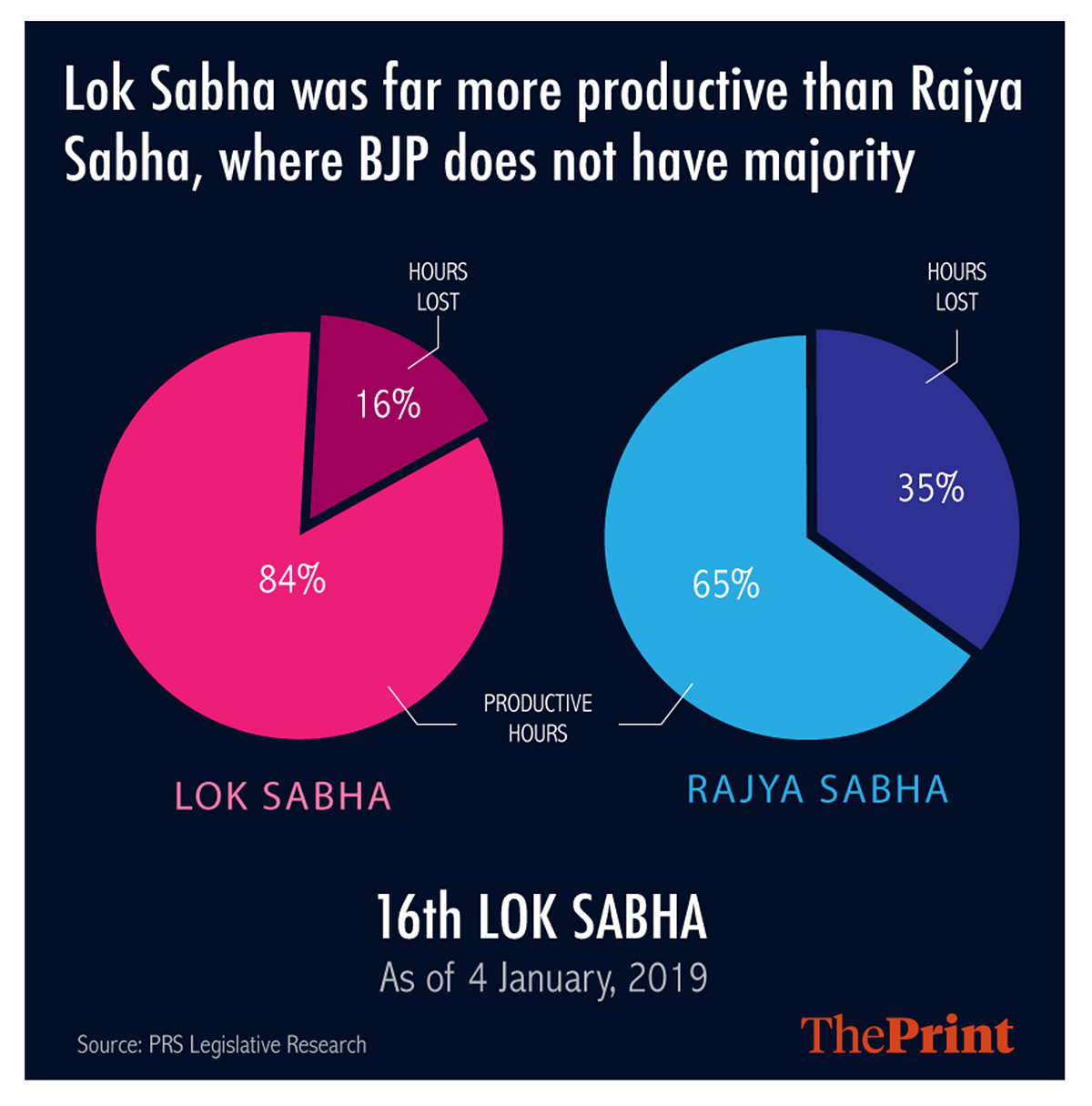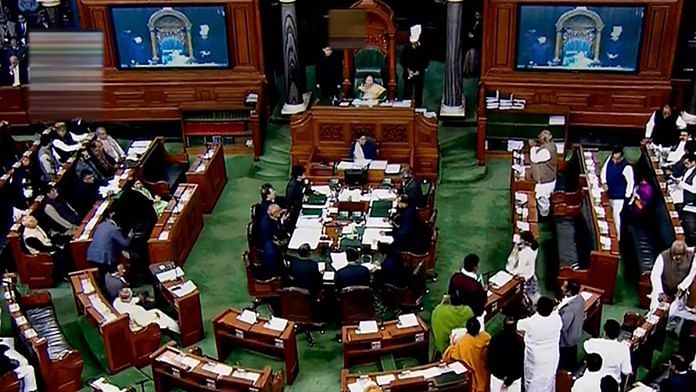The lower house performed better in last 5 years than it did between 2009-14, but upper house figures saw a decline.
New Delhi: In the last five years, since the Bharatiya Janata Party (BJP) stormed to power in 2014, Parliament has witnessed a precise trend – an active Lok Sabha given the government’s comfortable majority there, and a far more disruptive Rajya Sabha where the opposition has an upper hand. And the numbers for the 16th Lok Sabha underscore this very pattern.
According to data available with PRS Legislative Research, the productivity of the Lok Sabha in the last five years has been 84 per cent, as against a much lower 65 per cent figure for the Rajya Sabha (figures till 4 January).
Contrast this with the 15th Lok Sabha when the second United Progressive Alliance (UPA) government was in power, and the picture becomes even clearer. The productivity of the lower house went up significantly in the last five years from 63 per cent then – its worst performance in almost five decades, but that of the Rajya Sabha has fallen from 68 per cent.
Tuesday will be last day of the ongoing winter session of Parliament – the final full session before the 2019 Lok Sabha polls.

Also read: This ‘mind-reader’ claims he can tell if Modi will be PM again after Lok Sabha elections
How productive were the Houses
Productivity of a House is measured in terms of the number of hours the House functioned against the number of hours planned. In the Rajya Sabha, the NDA’s lack of majority has been its big stumbling block, giving the opposition a decisive upper hand. The Lok Sabha, however, has been another story with the BJP running it with a very comfortable majority.
The productivity figures, therefore, are reflective of this reality, with the Lok Sabha losing only around 16 per cent of its time, but the Rajya Sabha losing over one third – 35 per cent – of its total hours.
In Lok Sabha, the most productive session has been the 2015 budget session, which saw a 122 percent productivity, indicating the House sat far more than planned. The month-long winter session of 2016 was the least productive, clocking a mere 15 per cent. The session ended up being a near-washout, thanks to demonetisation that took place in November that year. With the opposition demanding an unconditional debate on demonetisation, the session saw barely any business being conducted.
In the Rajya Sabha, it was the budget session of 2014 – soon after the government assumed power – that was the most productive at 109 per cent, while the 2015 monsoon session saw the least work with a mere 9 per cent productivity. The latter was defined by an aggressive Congress stepping up its agitation demanding the resignations of Union Minister Sushma Swaraj and then Rajasthan Chief Minister Vasundhara Raje over the Lalit Modi controversy and Madhya Pradesh Chief Minister Shivraj Singh Chouhan in the Vyapam scam.

Bills passed
The Parliament passed a total of 131 government bills and 44 finance and appropriation bills in the last five years, as against 116 and 63, respectively, in the previous five years.
Some of the most significant bills this government managed to pass were related to big policy issues like Aadhaar, the Goods and Services Tax and Fugitive Economic Offenders, among others.

Also read: Rajnath to head BJP’s manifesto panel, Gadkari will lead outreach for 2019 Lok Sabha polls
How the productive hours were used
Of its total productive time, the Lok Sabha spent 29 per cent on legislation, 19 per cent on financial business, 13 per cent on questions and 34 per cent on non-legislation. The Rajya Sabha, meanwhile, correspondingly spent 22 per cent, 10 per cent, 11 per cent and 44 per cent respectively. Effectively, the lower house spent more of its productive time on both legislation and taking up questions that the upper house did.








So, are you saying it was a feather in Mr Modi’s cap????